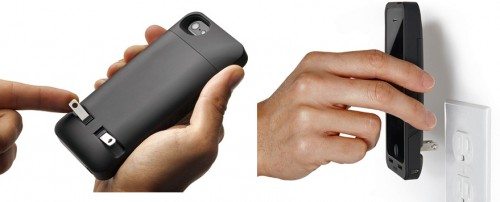
If you're getting your movie and TV show library in order, it helps to have all of your video in one format that you know every device you own can play without issue. However, if your collection spans years of downloads, rips, and saved copies, your files can be all over the place. This week we're going to look at five of the best video conversion tools that can faithfully get your media library organized and ready to watch anytime, anywhere.
Earlier in the week we asked you which video converters are the best. You weighed in with more options than we could possibly highlight, but after tallying them all up, there were five that stood out above the others. Here's what you said, in no particular order:
MPEG Streamclip (Windows/OS X)

MPEG Streamclip is a powerful video player, editor, and conversion tool for Mac and Windows. It's great at transcoding, but it's also a great organizational tool for all of your video and media. If you opt to use it as a player, you can play all manner of video file through it, but from a video transcoding and conversion perspective, it's fast, flexible, and completely free. Those of you who nominated it pointed out that it may not be the newest video conversion app out there, and it may not be the prettiest, but it gets the job done and can convert just about anything to just about anything else quickly, easily, and without complaining—and that's what's important.
Format Factory (Windows)

Format Factory is a free, richly featured video conversion tool that can convert a laundry list of video formats to a wealth of popular, supported formats. Its interface leaves a bit to be desired, but it offers you a ton of conversion options and tweaks to make sure all of your videos are the same, or each video is just right. The utility even promises to repair broken audio or video if it can process it. You can use quick presets to convert videos for mobile devices, and even rip DVDs. Those of you who praised Format Factory noted that you've never had a video format that the tool couldn't convert to another format that you actually needed, and hey—it can also convert almost any video format to GIF, which is a pretty nice trick.
Handbrake (Windows/OS X/Linux)

Video conversion and transcoding it actually Handbrake's bread and butter. Even though it's useful for a ton of other things (not to mention it's your favorite DVD ripping tool, with the caveat that you need VLC installed), at its core it does a fantastic job of converting and transcoding video from one format to another, while giving you all the features, tweaks, and options you need to make sure it plays smoothly on whatever device or screen you plan to send it to. It's one of those tools that has single push-button options if that's what you want, or deeper tweaks if you prefer those. Even with its options, it's not the most detailed and option-rich app in the roundup, as many of you pointed out. Many of you did praise the fact that Handbrake is free, open-source, cross platform, and gets the job done quickly—and doesn't discriminate by codec, either.
Freemake Video Converter (Windows)

Freemake Video Converter is, as the name implies, completely free, and a great tool if you're looking for more options than you could possibly need in a package that's actually really attractive and fun to use. Freemake supports over 200 video formats and outputs in virtually every popular format you can think of, and can even convert online videos to mp3. There are simple presets for iOS and Android devices, as well as other tablets, handheld game consoles, and other devices. If you don't like the presets in the app, you can really customize your own. You can cut, join, and rearrange videos to create seamless final products, and more. Those of you who nominated it pointed out that first, all this power is completely free, doesn't hesitate to leverage the power of your PC's hardware to power through those conversions, and can handle anything you throw at it—seriously, anything.
SUPER (Windows)

SUPER, by eRightSoft, is another powerful video conversion utility, but in this case, it's probably one of the most underrated conversion tools we've seen. It's feature list is pages long, but suffice to say that it can convert to and from more video formats and types than you could ever need with more options than you could ever possibly use. If you want absolute and total control over your videos, this might be the tool for you, and it's completely free. However, its depth of options and interface aren't exactly the prettiest and can be dense to the average user looking for quick conversion operations. Plus, in order to use SUPER, you'll also wind up downloading its video player and recording tools. Those of you who praised it noted its learning curve and ridiculous wealth of options and tweaks, but once you're familiar with it, it's hard to use something else.
Now that you've seen the top five, it's time to put them to a vote to determine the Lifehacker favorite:
Honorable mentions this week go out to FFmpeg (Windows/OS X/Linux), the GPL-licensed conversion utility that many other video converters are based on, and even other HTPC apps and video players use for on-the-fly transcoding. You can go right to the source and grab it for free for whatever platform you're using. It makes converting, streaming, and even recording audio and video super-simple and fits in nicely with other applications and operations. Best of all, it's being actively developed, so even if the others in the roundup fall by the wayside, FFmpeg will probably live on.
Have something to say about one of the contenders? Want to make the case for your personal favorite, even if it wasn't included in the list? Remember, the top five are based on your most popular nominations from the call for contenders thread from earlier in the week. Don't just complain about the top five, let us know what your preferred alternative is—and make your case for it—in the discussions below.
The Hive Five is based on reader nominations. As with most Hive Five posts, if your favorite was left out, it's not because we hate it—it's because it didn't get the nominations required in the call for contenders post to make the top five. We understand it's a bit of a popularity contest, but if you have a favorite, we want to hear about it. Have a suggestion for the Hive Five? Send us an email at tips+hivefive@lifehacker.com.
Photo by trekkyandy.

















